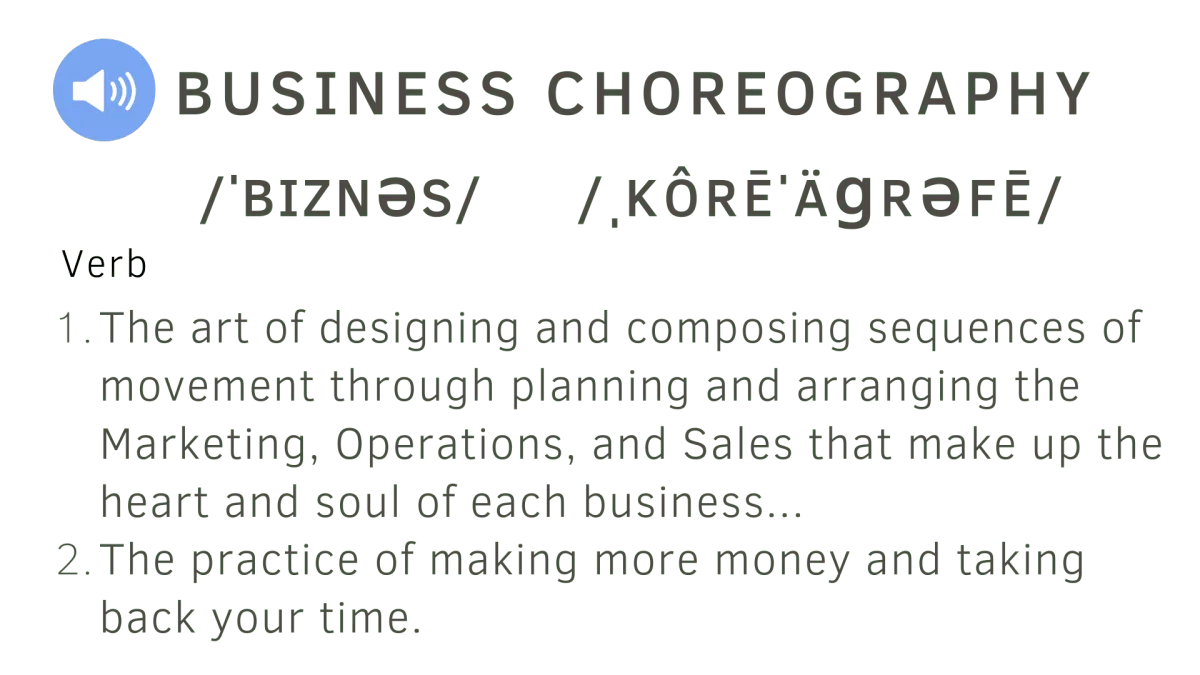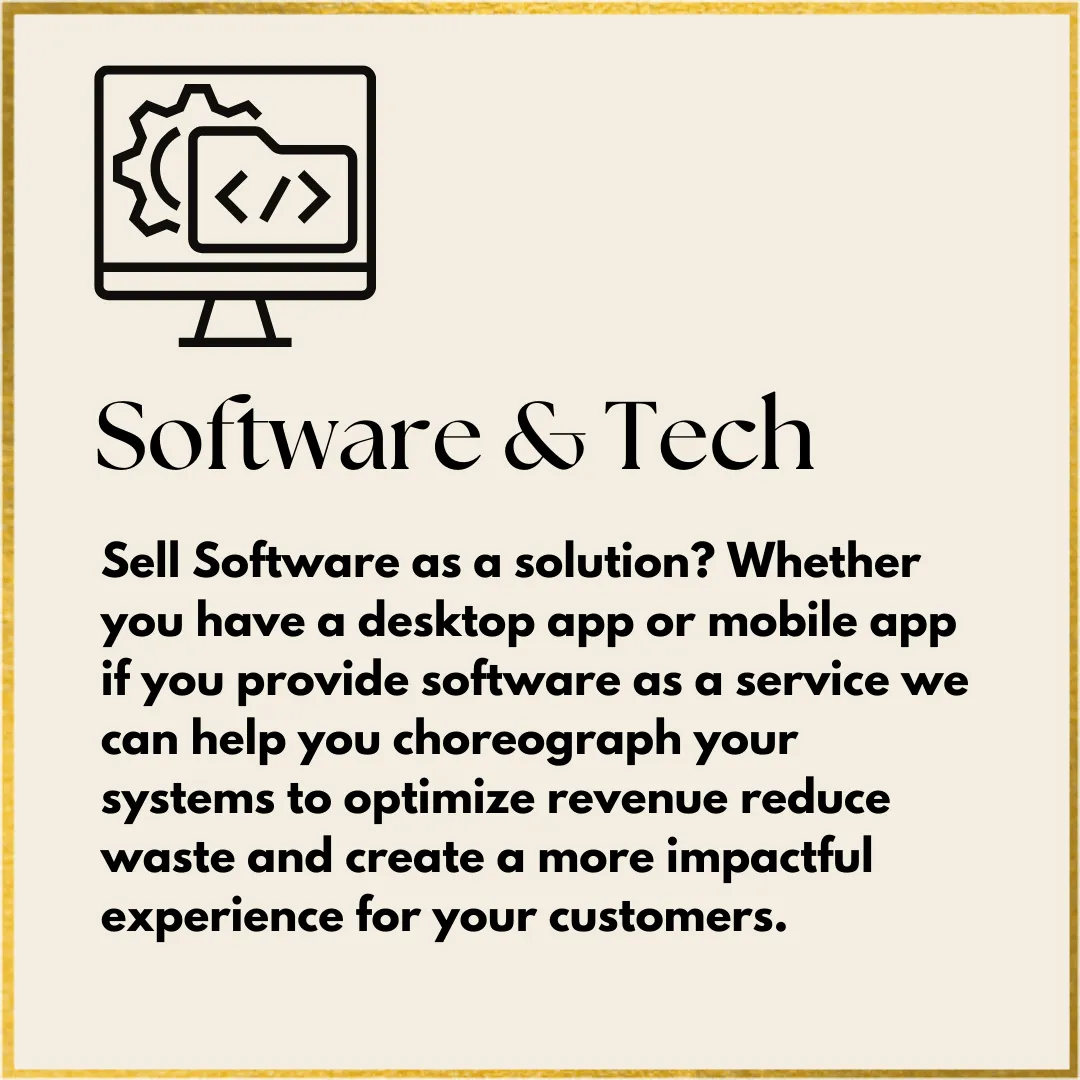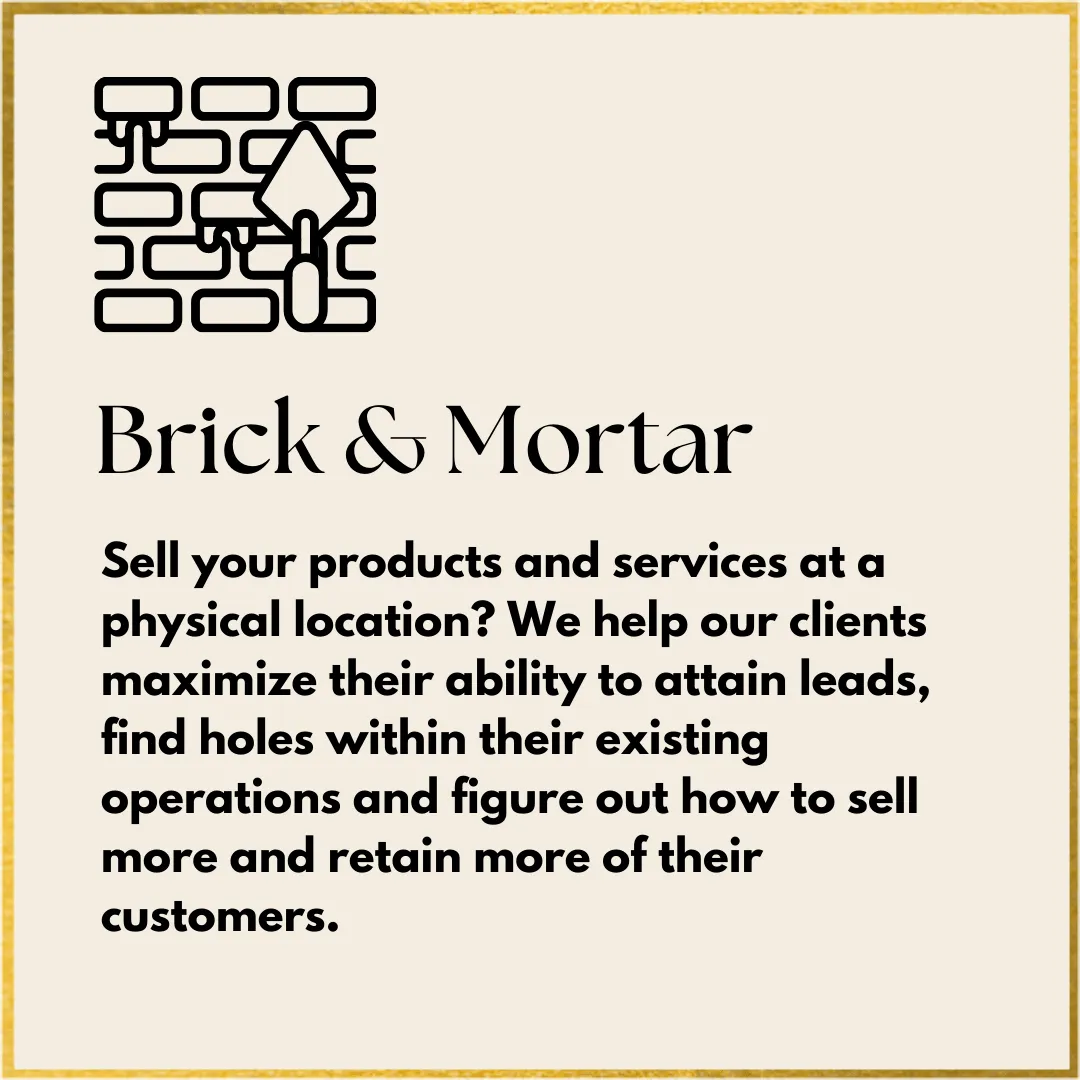
Learn how we choreograph 8 figure growth for Companies
We help Businesses Choreograph their Marketing, Operations, and Sales into Dynamic systems that increase revenue and impact.







What is Business Choreography?
Business Choreography is a term used to describe the coordination and alignment of business processes and activities within and between organizations in order to achieve common goals. It involves the orchestration of various business functions and resources, including people, technologies, and systems, in a synchronized manner to ensure that all stakeholders are working towards a shared objective.
In essence, Business Choreography is about creating a seamless flow of activities and interactions between different organizations, departments, and individuals. It involves identifying and mapping out the various touchpoints and interactions between different entities, and designing processes and systems that enable them to work together in a coordinated and effective manner.
Business Choreography is particularly important in today's globalized and interconnected business environment, where companies often rely on complex partnerships to achieve their objectives. By ensuring that all stakeholders are aligned and working together towards a shared goal, Business Choreography can help to improve efficiency, reduce costs, and enhance the overall effectiveness of a company's operations.
Hi, Michael & Lexi Here.
We both grew up in entrepreneurial families. Business has been in our genes from the very start. We were both professional athletes, and we both have been on an amazing journey to develop what has now become Business Choreography. That journey has allowed us some pretty incredible experiences including...
* Becoming U.S. Champions * Becoming a Master NLP Practitioner * Owning over 20 Businesses * Building 8 figure coaching systems * Training million dollar sales teams * Helping Startups from scratch to profit * Creating software platforms from scratch * Generating growth for companies all over the world
Now we have taken our combined experiences and brought them together to form a strategic growth solution that will help your company propel itself into the vision you've always had.
Here are some specific reasons why your business needs choreography:
Streamlined Processes: Choreography can help to streamline your business processes by identifying inefficiencies, eliminating redundancies, and improving the overall flow of activities and interactions.
Improved Collaboration: By aligning business processes and activities, choreography can help to improve collaboration and coordination between different departments, organizations, and stakeholders.
Enhanced Customer Experience: Choreography can help to improve the customer experience by ensuring that all touchpoints and interactions with the customer are seamless and integrated.
Increased agility and adaptability: Choreography enables organizations to quickly adapt to changing market conditions and respond to new opportunities and challenges.
Reduced Costs & Improved Profitability: By eliminating redundancies and improving efficiency, choreography can help to reduce costs and improve profitability.
Improved Risk Management: By ensuring that all stakeholders are aligned and working together towards a common goal, choreography can help to mitigate risks and improve overall risk management.
Overall, choreography can help your business to achieve its goals more effectively, and enhance the overall experience for all, including Customers, Employees, and Owners.
Who We Help
We help service based businesses Choreograph their Marketing, Operations, and Sales into Dynamic systems that increase revenue and impact.


$

About Business Choreography...
So many times at bat, so many strikeouts…
Oh but the home runs…
The home runs are spectacular and they keep you coming back for more.
Business choreography was born out of not just the home runs but the strikeouts that challenged our resolve and forced us to combine years of experiences, tears of sadness, and tears of joy.

Like with so many Entrepreneurs, we always swung for the fences. We developed so many businesses along the way. We called our shot and sometimes we hit one out of the park and many times we did not.

Through our adventures in Entrepreneur land, we discovered there were some amazing things being imparted to the business community but there was a massive gaping hole that no one seemed to be addressing well.
Everyone had their SECRET SAUCE,

everyone could teach their little niche of one thing or the next.
But we kept recognizing there was a problem…
Businesses were having a hard time putting it all together!

Should you do this cool strategy or that new tactic?
Should you build a funnel or sales team?
Is the problem in-house or are you missing something that's keeping you from growing to your full potential?
Then it hit us.
Execution of principles across your business from marketing, to operations, to sales, isn’t one solution.
It isn’t one principle.
It’s not just a single strategy that is going to help your company grow and serve your clients at
the next level.

"It’s all those things cHOREOGRAPHED together
in a beautiful dance that unlocks your business's deepest potential."
After years of running different types of businesses. Software, Personal Development, Brick and Mortar, Marketing, and Sales...

After managing hundreds of employees, running events, creating million-dollar coaching programs, and helping clients from startup to corporate, we have figured it out.
If You Want A Great DANCE, You Need Great CHOREOGRAPHY!

From how your marketing is developed to how it's passed off to your sales team.
How your sales team is created, to how they interact with the core operations in your business.
How your marketing message and company mission are conveyed to your team, to how your team communicates that message to your clients.

It all starts with great CHOREOGRAPHY!
We have developed core frameworks and processes that allow us to help businesses take their company to the next level.
Using tried and true principles allows us to dig into the parts and pieces that initially made their business come alive.
Then turn those parts and pieces into a growth-generating work of art.

Focus on any one piece of your business too long and the other parts suffer.
Keep living with the parts of your business that you patchworked together along the way and they will ultimately come back to haunt you.

Business Choreography can help you identify the assets that are actually helping you succeed and find the holes that are holding you back from growth.

Then like all true choreographers we can put the pieces and parts all back together in a way that can elevate you to your next lofty goal.
Lexi Ruffell & Michael Johnson
Let's Get Started Today...

Join us on the Business Choreography Podcast where we talk about choreographing your Marketing, Operations, and Sales into dynamic systems that increase your revenue and your impact. We explore solid business principles and discuss all things that make businesses dance to success with clarity.
Join Our Official Community

Join Us Today!
Join our community of service based businesses that are striving to grow. We focus on solid marketing, operations, and sales principles that help business owners just like you create generational wealth, legacy and impact. If you haven't joined us already don't miss this opportunity to get in a group that will help you make massive progress in your business.
Who would benefit from having Business Choreography done on their business?
Business Choreography can benefit a wide range of organizations, regardless of their size, industry, or location. Here are some examples of the types of organizations that may benefit from having choreography done on their business:
Large enterprises:
Large enterprises with complex business processes and a high volume of transactions may benefit from choreography to optimize their operations and improve collaboration between different departments and stakeholders.
Small & medium-sized businesses:
Small and medium-sized businesses may benefit from choreography to improve their efficiency, reduce costs, and enhance the customer experience.
Non-profit organizations:
Non-profit organizations may benefit from choreography to optimize their operations and ensure that all resources are being used effectively to achieve their mission.
Healthcare organizations:
Healthcare organizations may benefit from choreography to improve patient outcomes, streamline processes, and ensure that all stakeholders are aligned and working together effectively.
Manufacturing organizations:
Manufacturing organizations may benefit from choreography to improve production efficiency, reduce waste, and ensure that all stakeholders are aligned and working together effectively.
Government agencies:
Government agencies may benefit from choreography to improve their efficiency and effectiveness in delivering services to citizens.
Overall, any organization that is looking to optimize their business processes, improve collaboration and coordination between stakeholders, and enhance the overall effectiveness of their operations may benefit from having choreography done on their business.
ARTICLES WRITTEN BY US...

NAME OF ARTICLE

NAME OF ARTICLE

NAME OF ARTICLE
CLICK ON THE BUTTON BELOW
TO GET STARTED TODAY...
© Copyright 2024 - All Rights Reserved, Business Choreography
